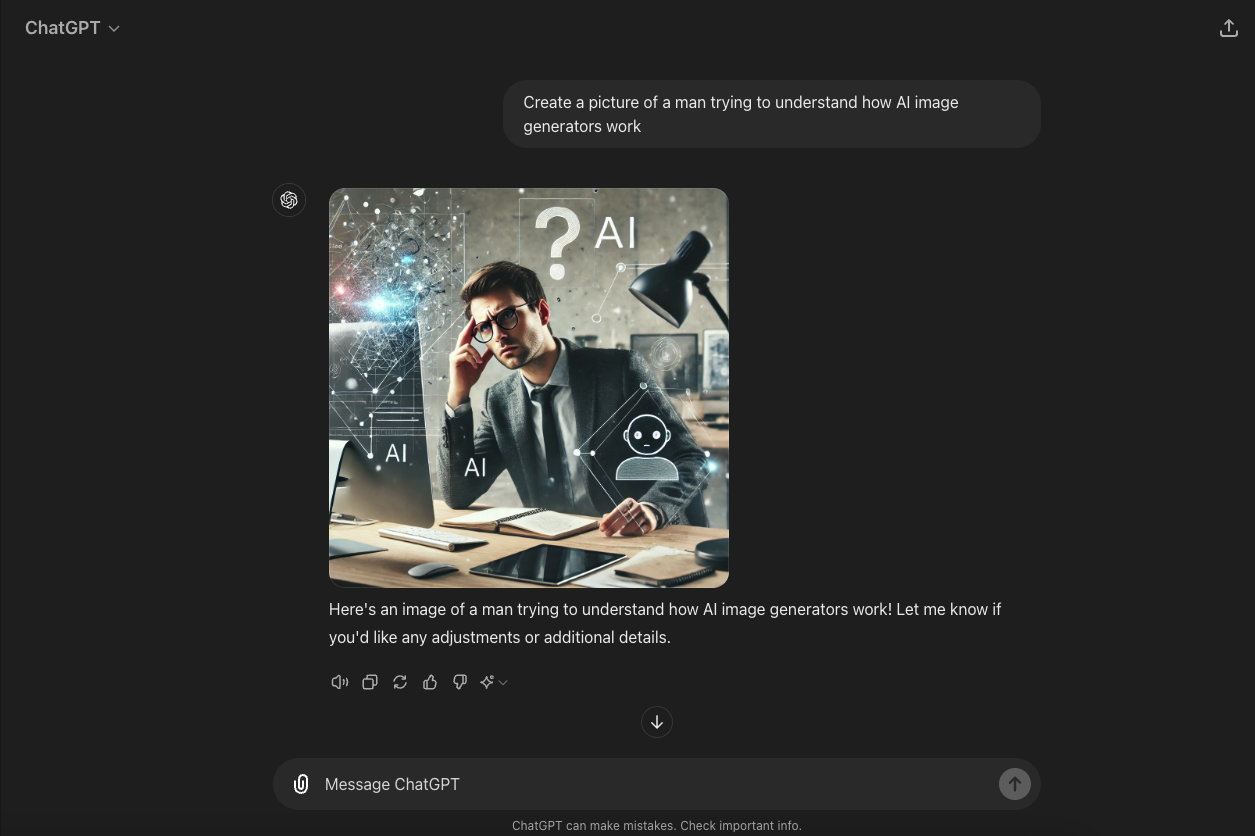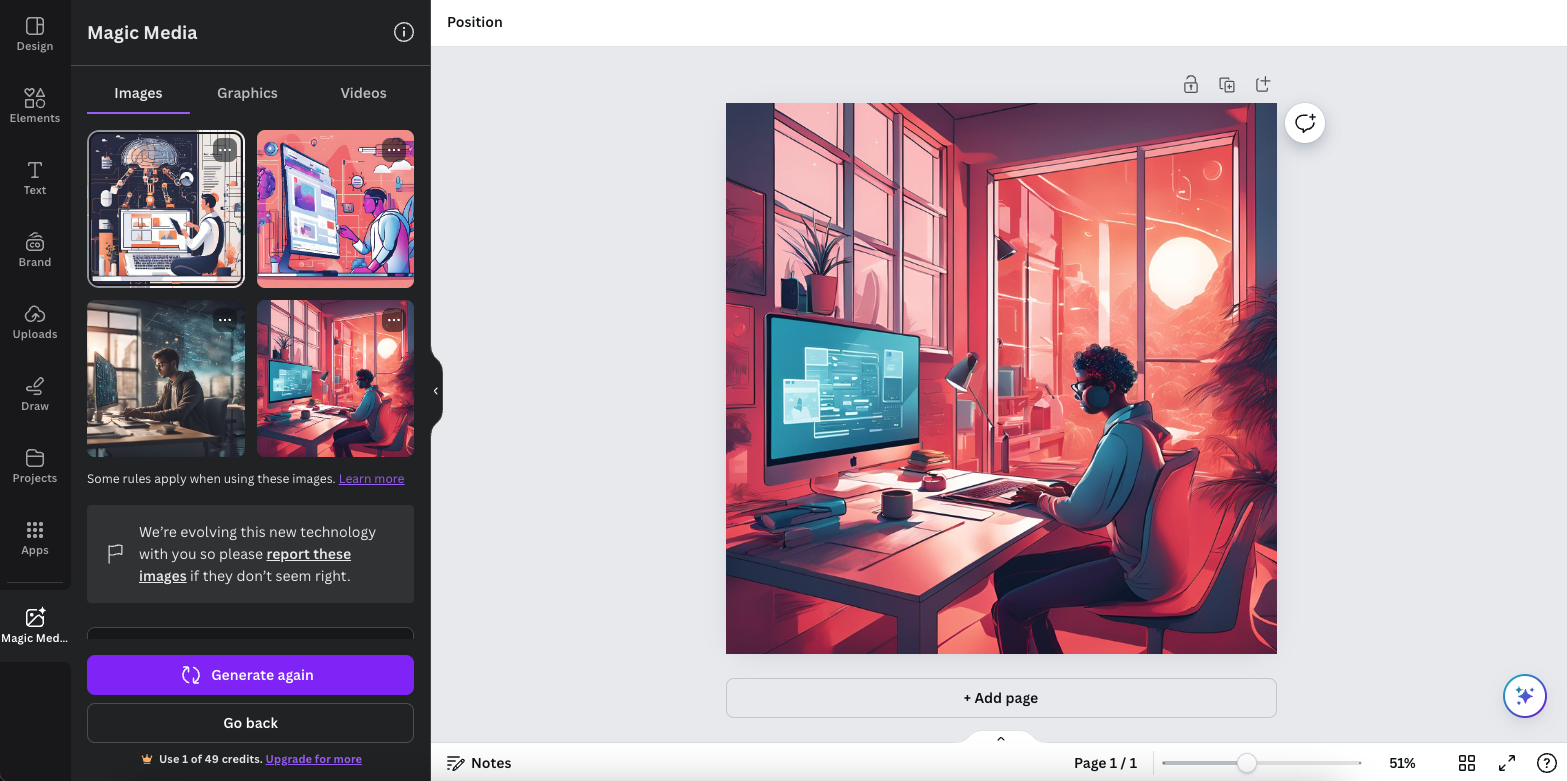
AI has transformed web development as we know it, but many website builders are still relying on traditional image sources for their designs. By combining one of the best AI website builders with AI-generated visuals, you can get much more creative with the look and feel of your web pages.
So how do you get started with AI-generated images for website building? We’ll be looking at how image generators work, popular tools that you can use, and some clever tricks to make your visuals come out looking exactly the way you want them to.
How do AI visual generation tools work?
AI image generators are built on artificial neural networks trained on massive datasets of image-text pairs. These networks learn to recognize patterns connecting specific words and phrases to visual elements and styles.
When a user inputs a text prompt, the system first converts the text into numerical representations or embeddings that capture the semantic meaning using natural language processing (NLP).
Simply put, the AI uses NLP models to “understand” your prompt in its own terms before it can turn it into a visual. This creates a "map" for the AI to follow when generating the image. Then, the actual image creation typically follows one of these approaches:
- Diffusion models: Start with random noise and gradually refine it into a coherent image based on the prompt.
- Generative Adversarial Networks (GANs): Use two competing neural networks - one generates images, the other evaluates them.
- Transformers: Leverage attention mechanisms to understand relationships between different elements of the prompt and image.
Needless to say, how AI generates images can get a little complex. Luckily, you don’t actually need to understand it to be able to use it, after all, AI image generators are supposed to make your life easier, not harder.
Common use cases for AI image generators
When it comes to AI-generated visuals, there are endless possibilities to what you can do with the technology. Experimenting with different types of assets, art forms, and media formats can help you produce the most unique results. For example:
- AI image generators can create custom stock-like photos for websites, presentations, and marketing materials, offering a more tailored and cost-effective alternative to traditional stock photography.
- These tools can produce original digital artwork and illustrations for various purposes, from book covers to concept art for games and films.
- Custom images for social media posts, stories, and ads can be quickly generated to maintain a consistent brand aesthetic across platforms.
- AI can create realistic product renders and mockups, allowing businesses to visualize new designs or variations without physical prototyping.
- Designers can generate unique backgrounds, patterns, and textures for use in graphic design projects, web design, and digital art.
- AI tools can assist in creating character concepts for animation, gaming, and storytelling purposes.
- Rapid generation of user interface elements and mockups can speed up the design process for apps and websites.
- AI can produce conceptual images of buildings and interior spaces, aiding in architectural planning and client presentations.
- Artists and publishers can use AI to generate eye-catching cover art for books, music albums, and other media.
5 great AI image generators to experiment with
As the technology continues to evolve, there are plenty of image generators to try out for different assets, art styles, and output formats. Each of them use different visual generation technologies that have their own strengths and weaknesses. They also differ in the way you interact with them, their learning curve, and their ideal uses.
Let’s take a look at 5 of the best of them now:
DALL-E 3

DALL-E 3, developed by OpenAI, is considered one of the best AI art generators and represents the cutting edge of automated image generation. This latest iteration boasts improved accuracy in interpreting complex prompts and generating highly detailed, photorealistic images.
DALL-E 3 excels at creating images that closely match user descriptions, including intricate scenes and abstract concepts. It offers a wide range of styles and can generate images in various resolutions. With the latest update, DALL-E can now understand and incorporate context from longer and more nuanced prompts, making it a powerful tool for artists, designers, and creative professionals seeking to bring their imaginative ideas to life.
Midjourney
Midjourney has gained a strong following for its ability to create artistic images with a distinct aesthetic. Operating primarily through Discord, Midjourney offers users a unique, community-driven experience.
It's particularly adept at generating fantastical, surreal, and highly stylized images that often have a painterly or illustrative quality. Midjourney's strength lies in its interpretation of abstract concepts and its ability to blend different artistic styles seamlessly. The platform also allows for iterative refinement, enabling users to guide the image generation process through a series of choices and adjustments.
Stable Diffusion
Stable Diffusion, developed by Stability AI, stands out for its open-source nature and flexibility. This model can be run locally on personal computers with sufficient GPU power, offering users more control over the generation process and privacy of their prompts and outputs.
Stable Diffusion is known for its versatility, capable of generating a wide range of image styles from photorealistic to abstract art. It's particularly popular among developers and researchers due to its customizability and the ability to fine-tune the model for specific use cases. The platform also offers various implementations and user interfaces, making it accessible to both technical and non-technical users.
Adobe Firefly
Adobe Firefly represents Adobe's entry into the AI image generation space, integrating seamlessly with its suite of creative tools. Firefly is designed with a focus on commercial use, trained on Adobe Stock images and openly licensed content to ensure the generated images are safe for commercial applications.
It offers a user-friendly interface and specialized features for tasks like text effects, image editing, and vector graphic generation. Firefly's integration with Adobe's ecosystem makes it particularly appealing to creative professionals already familiar with Adobe products such as Adobe Illustrator and Adobe Creative Cloud.
Canva's Text to Image

Canva has recently integrated AI image generation capabilities into its suite of tools. The new Text to Image feature allows users to generate custom images directly in their design projects. While perhaps not as advanced as some standalone AI image generators, Canva's offering stands out for its ease of use and integration with a wide array of design tools and templates.
It's particularly well-suited for small businesses, marketers, and individuals looking to quickly create professional-looking visuals without extensive design experience.
Using an AI image generator with AI website builders
Integrating AI-generated images into your AI-built website is a powerful way to create a unique and engaging visual experience. Many of the best website builders, such as Wix and Jimdo, offer built-in image generation tools that allow you to create custom visuals directly within the platform. To use these tools, simply describe the desired image using a text prompt, and the algorithm will generate a variety of options to choose from.
When selecting an AI image for your website, consider how it complements your overall design and brand aesthetic. Look for images that are relevant to your content and help convey your message effectively. Keep in mind that while AI-generated images can be highly realistic, they may sometimes contain artifacts or inconsistencies, so review each image carefully before adding it to your site.
In addition to using built-in AI image tools, you can also create visuals using standalone AI image generators like DALL-E, Midjourney, or Stable Diffusion. These platforms offer more advanced customization options and allow you to fine-tune your image prompts for highly specific results. Once you've generated an image you like, simply download it and upload it to your website using the platform's media manager or drag-and-drop functionality.
By combining the power of AI website builders and AI image generators, you can create a completely unique and engaging website that stands out from the crowd. Experiment with different prompts and styles to find the perfect visuals for your site, and don't be afraid to iterate and refine your designs as you go.







